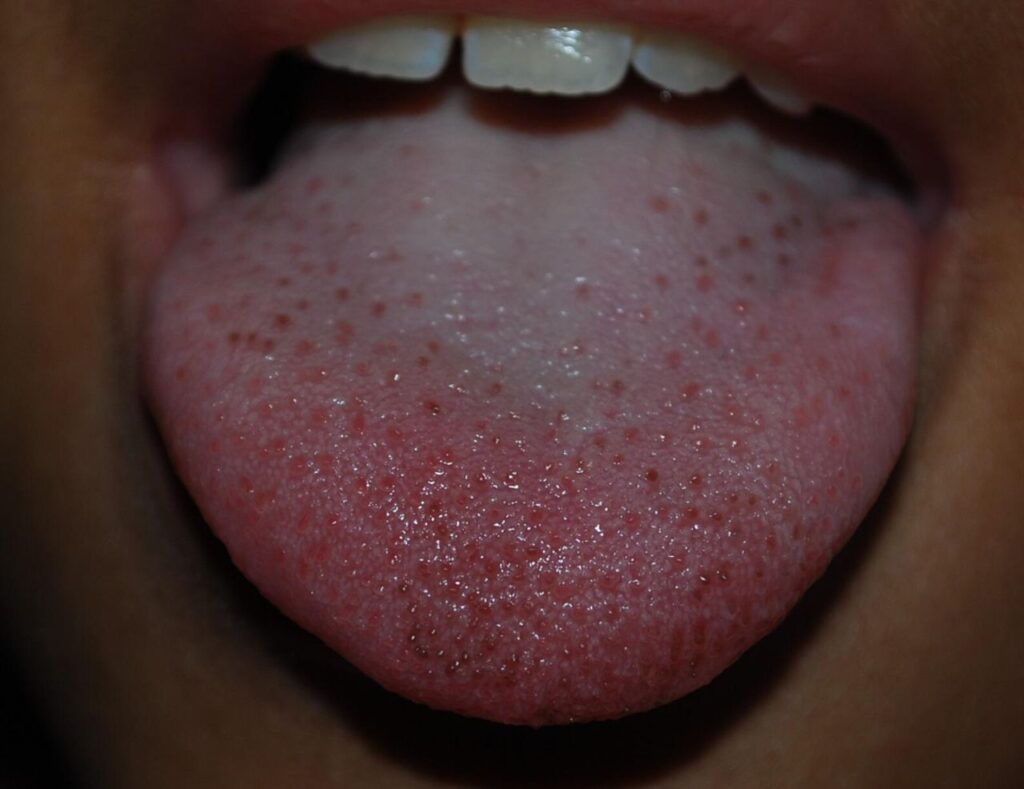Table of Contents
How Racial Pigmentation Determines Skin Color
Intro
Racial pigmentation is a key factor in determining skin color. It is the result of an increase in melanocytic activity, which is the process by which melanocytes, the cells responsible for the production of melanin pigment, produce greater amounts of this pigment in those with dark skin. This means that the darker one’s skin is, the more melanin pigment it contains, and the lighter one’s skin is, the less melanin pigment it contains. In this blog post, we will explore the science behind racial pigmentation and how it determines skin color.
What is Racial Pigmentation?
Racial pigmentation refers to the process by which the skin color of an individual is determine. It is a natural biological phenomenon that is influence by various factors, including genetics, environment, and evolutionary history. Pigmentation plays a significant role in human variation, and it is an essential aspect of physical appearance that varies greatly among different ethnicities.
Melanin is the primary determinant of skin color and is produce by cells call melanocytes. Racial pigmentation occurs when melanocytes in the skin produce a higher amount of melanin pigment, resulting in dark skin coloration. Unlike popular belief, people with dark skin do not necessarily have more melanocytes than those with lighter skin; rather, they have more active melanocytes that produce more melanin.
Skin coloration is influence by both genetic and environmental factors. Some genes control the production of melanin, while others regulate how it is distribute in the skin. Environmental factors, such as exposure to ultraviolet (UV) radiation from the sun, can also affect skin pigmentation. The amount of UV radiation that penetrates the skin depends on several factors, including geography, altitude, and lifestyle.
Racial pigmentation has evolutionary origins and is an adaptation to the environment in which humans have evolve. For instance, dark skin provides a natural protection against harmful UV radiation from the sun, preventing damage to the skin’s DNA and reducing the risk of skin cancer. As humans migrate from equatorial regions to areas with less sunlight, their skin became lighter to allow more UV radiation to penetrate and enable the production of vitamin D, which is essential for bone health.

How Melanin is Produced
Melanin is the pigment responsible for skin color, and it is produce by special skin cells call melanocytes. Melanin is not only responsible for the color of the skin but also plays an essential role in protecting the skin from UV radiation.
This produce through a process call melanogenesis. Melanocytes synthesize melanin from the amino acid tyrosine, which is then convert into melanin by the action of an enzyme call tyrosinase. The type and amount of melanin produce by melanocytes depend on genetic and environmental factors.
Two types of melanin determine skin color: eumelanin and pheomelanin. Eumelanin is responsible for darker skin tones, while pheomelanin is responsible for lighter skin tones. In individuals with dark skin, there is a higher production of eumelanin, whereas individuals with light skin have a higher production of pheomelanin.
Melanocytes transfer the melanin produce to keratinocytes, the cells that make up the outer layer of the skin. Keratinocytes then use the melanin to shield the skin cells’ nucleus from harmful UV radiation. This action is critical in protecting the skin from developing skin cancer.
The production of melanin can be influence by several factors such as sun exposure, hormonal changes, and aging. Certain drugs and chemicals can also interfere with melanin production, leading to conditions like hypopigmentation and hyperpigmentation.
Genetic Factors That Determine Skin Color
While it is true that external factors such as sun exposure and nutrition can influence skin color, genetic factors play the most significant role in determining our skin’s natural pigmentation. Genes regulate the amount of melanin our skin produces, the type of melanin, and the distribution of melanin within our skin.
Melanin is synthesize by specialize skin cells call melanocytes, which are locate in the basal layer of the epidermis. The activity of these cells is regulate by a variety of genes, including those that control the production of melanin-stimulating hormones (MSH) and those that encode for melanin-producing enzymes such as tyrosinase. Variation in these genes can lead to differences in melanin production and, consequently, differences in skin color.
There are several genes involve in skin pigmentation, but the most significant one is the melanocortin-1 receptor (MC1R) gene. This gene regulates the type of melanin produce by melanocytes. Mutations in the MC1R gene can cause changes in skin color, including red hair and fair skin in people of European descent.
Other genes associate with skin pigmentation include SLC24A5, which is responsible for producing a protein that regulates melanin production and is associate with light skin pigmentation, and TYRP1, which controls the type of melanin produce in the skin.
While genetic factors play a crucial role in determining our skin color, it’s important to note that these factors do not define our race or ethnicity. Skin color is just one physical characteristic among many that vary among human populations, and its variation does not correspond neatly with racial categories.
Environmental Factors That Affect Skin Color
Although genetics plays a significant role in determining skin color, environmental factors can also have an impact. One of the most well-known factors is exposure to the sun. Sunlight causes the skin to produce more melanin as a way to protect against harmful UV radiation. This is why people living in areas with more intense sunlight, like equatorial regions, tend to have darker skin tones. Conversely, those living in regions with less sunlight, like Scandinavia, tend to have lighter skin tones.
However, modern lifestyle habits like the use of sunscreen and indoor jobs may decrease melanin production, leading to lighter skin tones even in regions with more intense sunlight. Additionally, pollution can contribute to skin damage and dark spots, which can alter skin color over time.
Diet is also an environmental factor that can impact skin color. Consuming foods rich in antioxidants, like leafy greens and berries, can help protect against skin damage and preserve a more even skin tone.
Finally, stress can also affect skin color through the release of cortisol, a hormone that can interfere with melanin production. Managing stress through meditation, exercise, or therapy can help maintain healthy skin.
Overall, while genetics plays a major role in determining skin color, environmental factors like sunlight exposure, diet, pollution, and stress can also play a part. It’s essential to take care of our skin and be aware of the environmental factors that may impact its health and appearance.

The Evolutionary Advantage of Dark Skin
It is a well-establish fact that dark-skin individuals have a greater concentration of melanin pigment in their skin. But have you ever wonder why this is the case? As it turns out, there is an evolutionary advantage to having dark skin, especially in regions closer to the equator.
One of the primary functions of melanin is to protect the skin from the harmful effects of UV radiation. Dark-skin individuals have higher levels of melanin, which allows them to spend more time outdoors without suffering from sunburn or skin damage. In regions closer to the equator, where the sun’s rays are strongest, having dark skin provides a clear advantage in terms of protection.
In addition to protection from UV radiation, there is evidence to suggest that dark skin may have other health benefits. For example, dark-skin individuals may be less prone to certain types of cancer, such as melanoma, as well as other skin disorders.
It is important to note, however, that not all dark-skin individuals live in regions with high levels of UV radiation. Therefore, there are other factors at play that influence skin color and its potential advantages or disadvantages. Additionally, skin color alone is not a reliable indicator of race or ethnicity, as it can vary greatly even within the same group of people. Understanding the complexity of skin color and its evolution is an important step towards dismantling harmful myths and stereotypes surrounding race.
Skin Color and Health Risks
The color of our skin has a significant impact on our overall health. People with darker skin are more protect against certain health issues, while people with lighter skin are at greater risk for other conditions. Here are some health risks associate with skin color:
Melanoma is a type of skin cancer that is more common in people with lighter skin. Those with darker skin have a lower risk of developing melanoma, but they are more likely to die from it when it does occur. This is because melanoma is often not detect until it has progress to a later stage in people with darker skin.
Vitamin D Deficiency:
Melanin in the skin absorbs ultraviolet (UV) radiation, which can limit the amount of vitamin D that is produce in the skin. Vitamin D is essential for bone health and a deficiency can lead to conditions like rickets. People with darker skin may need more sunlight exposure or dietary supplements to get adequate levels of vitamin D.
Psoriasis is a skin condition that causes itchy, red patches on the skin. It is more common in people with fair skin and less common in those with dark skin. However, psoriasis can be more severe and harder to treat in people with darker skin.
Overall, it is important to remember that skin color is just one aspect of our health. We should focus on maintaining a healthy lifestyle, getting regular check-ups with a healthcare provider, and protecting our skin from harmful UV radiation.

